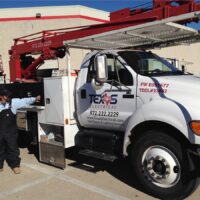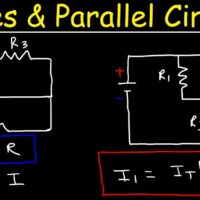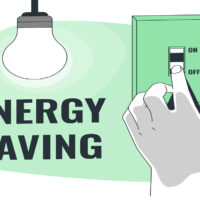Home automation systems cost between $500 to $2,500 on average. Prices vary based on features and installation complexity.
Home automation systems offer convenience, security, and energy efficiency. These systems allow homeowners to control devices like lights, thermostats, and security cameras remotely. Integration with smart assistants like Alexa and Google Home enhances user experience. Costs depend on the level of automation, with basic setups being more affordable.
Advanced systems with comprehensive features and professional installation can be more expensive. Investing in home automation can increase property value and improve quality of life. As technology advances, more affordable options continue to emerge, making smart home solutions accessible to a broader audience. Choose a system that fits your budget and meets your needs.
Introduction To Home Automation
Home automation is revolutionizing how we interact with our living spaces. It enhances convenience, security, and energy efficiency. Understanding home automation can help you decide if it’s right for your home.
What Is Home Automation?
Home automation refers to using technology to control home systems. It includes lighting, heating, security, and appliances. These systems can be automated or remotely controlled via smartphones or tablets.
Smart home devices communicate through the internet. This connection allows homeowners to manage their homes efficiently. Automation can range from simple tasks, like turning lights on, to complex security systems.
Benefits Of Home Automation
There are many benefits to home automation. It offers convenience, security, and savings.
- Convenience: Control your home from anywhere using your smartphone.
- Security: Automated locks and cameras enhance home security.
- Energy Efficiency: Smart thermostats and lights reduce energy bills.
- Customization: Tailor your home settings to fit your lifestyle.
Home automation can save time and effort. Imagine waking up to a pre-warmed house or setting the mood with smart lighting. It’s all possible with home automation.
| Feature | Benefit |
|---|---|
| Smart Lighting | Energy savings and mood setting |
| Smart Thermostats | Reduced energy bills |
| Smart Locks | Enhanced security |
| Smart Cameras | Real-time monitoring |
Home automation is not just a trend. It improves daily life and provides peace of mind. Investing in smart home technology can transform how you live.
Factors Influencing Costs
Home automation systems can significantly enhance your living experience. However, several factors influence the overall costs. Understanding these can help you budget effectively and make informed decisions.
Types Of Systems
The type of home automation system you choose greatly impacts costs. Basic systems might include simple lighting or thermostat controls, which are relatively inexpensive. On the other hand, advanced systems offer comprehensive control over various home functions, such as security, entertainment, and climate control. These systems are more costly.
- Basic Systems: Typically involve single-function controls.
- Advanced Systems: Include multi-function controls and integration.
Some homeowners prefer custom-built systems tailored to their specific needs. Custom solutions usually come with a higher price tag due to bespoke design and specialized equipment.
Installation Costs
Installation costs can vary widely depending on the complexity of the system. A simple DIY setup for a basic system might only cost a few hundred dollars. Professional installation for advanced systems can run into thousands.
| Installation Type | Estimated Cost |
|---|---|
| DIY Installation | $100 – $500 |
| Professional Installation | $500 – $5,000+ |
Professional installation ensures that the system is set up correctly. This can prevent future issues and provide peace of mind. The choice between DIY and professional services often depends on your technical skills and budget.
Affordable Solutions
Home automation doesn’t have to be expensive. There are many affordable solutions. You can make your home smart without breaking the bank. Here are some budget-friendly options and DIY tips.
Budget-friendly Options
There are many affordable home automation products. These products fit every budget. You can start small and add more devices later. Here are some examples:
- Smart Light Bulbs: Control lights with your phone. Prices start from $10.
- Smart Plugs: Turn devices on or off remotely. Prices start from $15.
- Smart Thermostats: Save energy and money. Prices start from $50.
| Device | Starting Price |
|---|---|
| Smart Light Bulbs | $10 |
| Smart Plugs | $15 |
| Smart Thermostats | $50 |
Diy Home Automation
DIY home automation can save you money. You don’t need to hire a professional. Many smart devices are easy to install. Here are some tips:
- Research Products: Read reviews and watch videos.
- Start Small: Begin with one or two devices.
- Use Tutorials: Follow online guides for installation.
By following these steps, you can automate your home affordably. Enjoy the convenience of a smart home without high costs.

Credit: www.homeadvisor.com
Popular Affordable Devices
Home automation systems have become more affordable. Many devices can enhance your home’s comfort and security without breaking the bank. Here are some popular affordable devices that you can consider.
Smart Lights
Smart lights are easy to install and affordable. They can be controlled remotely using your smartphone. Some popular options include:
- Philips Hue: Offers a range of colors and brightness levels.
- TP-Link Kasa Smart Bulb: No hub required, works with Alexa and Google Assistant.
- Sengled Smart LED Bulb: Energy-efficient and budget-friendly.
Thermostats
Smart thermostats can help you save on energy bills. They learn your schedule and adjust temperatures automatically. Some affordable options are:
- Google Nest Thermostat: Easy to install and use, with energy-saving features.
- Honeywell Home T5+: Works with Alexa, Google Assistant, and Apple HomeKit.
- Emerson Sensi Touch: Features a touchscreen display and simple controls.
Security Cameras
Security cameras offer peace of mind and are now more affordable. You can monitor your home from anywhere. Consider these options:
- Wyze Cam v3: Weatherproof and offers night vision.
- Ring Indoor Cam: Compact and works with Alexa.
- Arlo Essential Spotlight: Wireless and includes a spotlight for night viewing.
These devices can transform your home without a hefty investment. Choose what fits your needs and budget.
Cost Comparison
Home automation systems can vary significantly in cost. Understanding these differences helps you make an informed decision. This section will explore the cost comparison between branded and generic options, and the balance between initial investment and long-term savings.
Branded Vs. Generic
Branded home automation systems offer reliability and high-quality components. Brands like Google Nest, Amazon Alexa, and Apple HomeKit are popular.
- Branded systems often have better support and warranties.
- They integrate seamlessly with other smart devices.
Generic systems are typically more affordable. They may lack some features but still get the job done.
- Generic options are great for budget-conscious buyers.
- They may have limited compatibility with other devices.
| Feature | Branded | Generic |
|---|---|---|
| Cost | High | Low |
| Support | Extensive | Limited |
| Compatibility | High | Variable |
Initial Investment Vs. Long-term Savings
The initial investment for home automation may seem high. But it can lead to significant long-term savings.
- Initial costs cover hardware, installation, and setup.
- Long-term savings come from energy efficiency and reduced utility bills.
Smart thermostats, lights, and appliances can lower energy use. This reduces monthly expenses over time.
Automated security systems can lower insurance premiums. These savings add up quickly, balancing the initial cost.
Key Takeaway: While branded systems offer reliability, generic systems are budget-friendly. The initial investment in home automation can lead to long-term savings through energy efficiency and security benefits.
Installation Tips
Installing a home automation system can be exciting yet challenging. Here are some tips to help you get started, whether you choose to install it yourself or hire professionals.
Self-installation
Self-installation can save you money. To get started, follow these steps:
- Plan your setup: Make a list of devices and their locations.
- Read the manuals: Understand how each device works.
- Check compatibility: Ensure all devices are compatible with your system.
- Install one device at a time: This makes troubleshooting easier.
- Test each device: Make sure it works before moving to the next one.
Self-installation suits tech-savvy individuals. It offers flexibility and control over the setup process.
Hiring Professionals
Hiring professionals can ensure a seamless installation. Here are some benefits:
- Expertise: Professionals have the knowledge and experience.
- Time-saving: They can complete the job quickly.
- Warranty: Many professionals offer warranties on their work.
- Support: They provide ongoing support and troubleshooting.
Before hiring, check reviews and credentials. Ask for a detailed quote to understand the cost involved. Hiring professionals is ideal for complex systems or large homes.
Below is a comparison table of Self-Installation vs. Hiring Professionals:
| Aspect | Self-Installation | Hiring Professionals |
|---|---|---|
| Cost | Lower | Higher |
| Time | Variable | Fixed |
| Expertise | Requires knowledge | Professional skills |
| Flexibility | High | Moderate |
Weigh the pros and cons to decide the best option for your home automation system installation.
Maximizing Value
Maximizing value from home automation systems involves smart choices and strategic planning. Investing in the right technologies can save money and enhance comfort.
Energy Efficiency
Energy efficiency is a top priority for home automation systems. Smart thermostats and lighting systems can cut energy costs significantly. These devices learn your habits and adjust settings to save power. For example, smart thermostats lower heating or cooling when no one is home. Smart lighting systems turn off lights in empty rooms. Energy-efficient appliances also contribute to lower utility bills. Investing in these technologies pays off over time.
Integration With Existing Systems
Integrating new technologies with your existing systems maximizes value. Smart home devices should work well with what you already have. Compatibility ensures that you do not need to replace everything. For instance, smart plugs can make regular devices smarter. Smart hubs can connect various devices for seamless control. This integration saves costs and enhances convenience.
| Technology | Estimated Savings |
|---|---|
| Smart Thermostats | 10-15% on heating and cooling |
| Smart Lighting | Up to 30% on lighting costs |
| Energy-Efficient Appliances | 10-25% on appliance usage |
Choosing devices that integrate with your current setup avoids unnecessary expenses. It also ensures a smoother transition to a smart home. This makes managing your home simpler and more efficient.

Credit: www.fixr.com
Future Trends
The future of home automation systems is bright. New technologies are emerging every day. These innovations will make systems smarter and more affordable. Let’s dive into some exciting trends.
Emerging Technologies
New technologies are changing home automation. These innovations promise to make homes smarter:
- Artificial Intelligence (AI): AI will make devices smarter. They will learn user habits and preferences.
- Internet of Things (IoT): IoT devices will connect everything. Your home will run smoothly.
- 5G Networks: 5G will speed up connections. This will make systems more responsive.
- Voice Control: Voice assistants will get better. You will control more devices with your voice.
Predicted Cost Reductions
The cost of home automation systems is dropping. Here are some reasons why:
- Mass Production: More devices are being made. This lowers costs.
- Technological Advances: New tech is cheaper to produce.
- Increased Competition: More companies are entering the market. This drives prices down.
Here is a table showing predicted cost reductions:
| Year | Average Cost Reduction |
|---|---|
| 2023 | 10% |
| 2024 | 15% |
| 2025 | 20% |
As these trends continue, home automation will become more accessible. This will benefit many households.

Credit: www.cannyelectrics.com.au
Frequently Asked Questions
What Is The Average Cost Of Home Automation Systems?
The average cost of a home automation system ranges from $1,000 to $3,000. This includes installation and basic equipment.
How Much Does Smart Home Installation Cost?
Smart home installation can cost between $200 and $1,500. Prices vary based on the complexity and number of devices.
Are Home Automation Systems Expensive To Maintain?
Home automation systems generally have low maintenance costs. Routine updates and occasional repairs might cost around $100 annually.
Can I Save Money With Home Automation?
Yes, home automation can save money on energy bills. Smart thermostats and lighting systems reduce energy consumption.
Conclusion
Home automation systems vary in cost but offer significant value and convenience. Investing in smart technology can enhance your home’s efficiency and security. Consider your budget and needs when exploring options. With careful planning, you can find a system that fits your lifestyle and provides long-term benefits.




